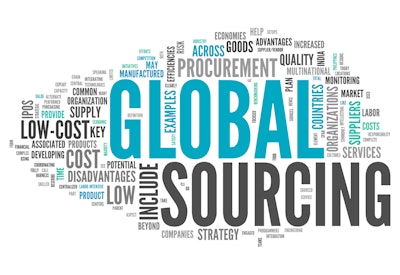
Most supply chain leaders were caught off guard when the pandemic hit, and companies struggled to maintain material supply continuity. Now, two years into COVID-19, and direct materials procurement continues to be more challenging than ever. Companies still struggle as geopolitical volatility, natural disasters and price inflation disrupt supply chains in unpredictable ways making it elusive to strike the right balance between supply and demand.
One has to look no further than the automobile industry to witness the recent shortage of silicon chips and the backlog of inventories. The silicon chip industry that saw astronomical demand during the peak of the pandemic now faces sagging demand and growing inventories. With all this ongoing market volatility, traditional means of balancing supply and demand no longer provide adequate stability and cost benefits. With a recession looming and geopolitical events creating uncertainty in commodity markets, there is an opportunity to leverage new, innovative technologies that help us balance demand with supply while also creating competitive advantage. After all, direct material sourcing affects the bottom line, so there is a huge opportunity to intelligently digitize this workflow.
That’s where artificial intelligence (AI) can help. In fact, according to McKinsey, companies successfully implementing AI-enabled supply chain management improved logistics costs by 15%, inventory levels by 35% and service levels by 65%, compared with slower-moving competitors. Despite clear benefits, the number of companies taking advantage of these platforms is still relatively low today.
Dynamically adapting to ongoing market volatility
The market interactions creating risk are extremely complex and not easily spotted using traditional methods, which focus mainly on internal data. By bringing in vast amounts of data from numerous, nontraditional sources such as weather, news and markets, AI tools can proactively analyze and serve up insights and recommendations when they detect early signals of emerging critical opportunities or risk. With these predictive insights, procurement teams can lock in optimized material costs and quantities before competitors that source the same components. This creates a competitive advantage whether companies are focused on finding parts or getting the best price.
Balancing supply and demand requires in-depth supplier intelligence and collaboration
Successfully balancing supply and demand during uncertain times comes down to reducing risk and costs by having the best information available in real time. The pandemic-related chip shortage and now the chip oversupply brought on by recession and geopolitical maneuvers are great examples of how severe an impact supply volatility can have on entire industries.
There isn’t an easy solution to these situations, but these past situations serve as cautionary tales for every industry that isn’t using predictive techniques to make better bets in advance of a disruption. How can organizations better anticipate shifts in supply and demand? How can supply chain professionals better anticipate risks and find cost-saving opportunities within their supply chain? It turns out AI-powered direct procurement software-as-a-service (SaaS) platforms provide the capabilities to do exactly that.
To start, applying AI to market and supplier intelligence allows organizations to operate like a much larger company without adding headcount. AI allows you to seamlessly bring your company’s data together with insights from suppliers and benchmarks from multiple third-party resources. Using predictive analytics, companies can detect signals that indicate a shift in supply and demand is happening. Based on supplier sites, AI can help select the most competitive and reliable suppliers and materials for products. Intelligent platforms can even identify high-risk suppliers, so companies can address problems before they even emerge.
AI-enabled predictive modeling connected to the supply chain can also identify suppliers with excess inventory, allowing procurement teams to purchase components at a discounted rate and enjoy better profit margins.
The key to AI-enabled platforms is intelligent automation. With inputs of massive data from many internal and external sources, these systems automatically send alerts and recommendations in real time when detected patterns signal important changes. With this new intelligence, companies can act quickly and make better bets than competitors. So, these platforms generate new sources of value, in addition to reducing risk.
Supplier intimacy
In a volatile economy, having a nimble and intelligent supplier strategy is key. And part of that strategy is having access to early and insightful intelligence. AI-powered direct supply management SaaS platforms use recommendation engines to help select suppliers based on their risk profile and prioritized by their lead time, geography, and cost. By analyzing a supplier’s financial health, companies get a heads-up on the providers that might not be around soon. Then these platforms can help examine current suppliers to determine if they can deliver on the units already contracted and track their updates on pricing, supply availability and lead times.
Companies can collaborate with their suppliers using built-in scenario planning tools. By providing more visibility on suppliers through these platforms, companies can help them plan their product capacity, technology road maps, and investments for the longer term. That way, companies are more likely to get the key components when you need them. Then, use the platform dashboard to manage the entire quote, bid, and award process to optimize your supplier mix.
The bottom line
If your organization has not embraced AI-powered direct supply management SaaS yet, you are losing ground to competitors while leaving money on the table. The insights, automation and recommendations these platforms provide not only help reduce risk as supply and demand shift, but also create immediate and concrete cost savings for your company. In fact, it is difficult to imagine how your organization can successfully compete without these insights—especially as the frequency and magnitude of global disruption increases.
















![Pros To Know 2026 [color]](https://img.sdcexec.com/mindful/acbm/workspaces/default/uploads/2025/08/prostoknow-2026-color.mduFvhpgMk.png?ar=16%3A9&auto=format%2Ccompress&bg=fff&fill-color=fff&fit=fill&h=135&q=70&w=240)